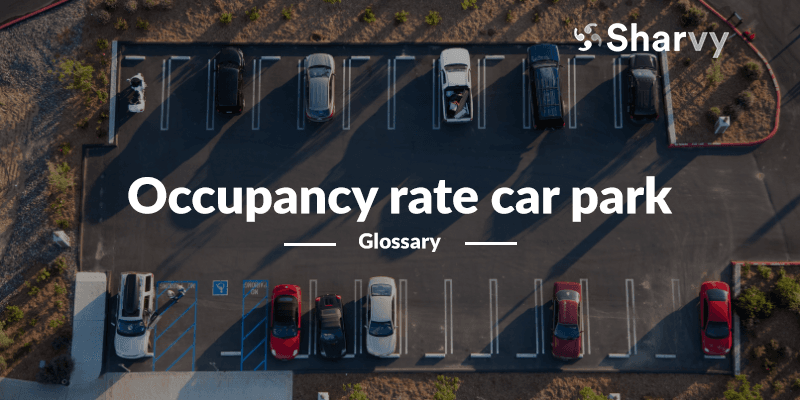What is the occupancy rate of a company car park? – Definition
The occupancy rate for a company car park is simply the proportion of parking spaces that are actually used, compared with the total number of spaces available. It is expressed as a percentage, and shows, for example, whether the car park is often full, half empty or rarely used.
In concrete terms, if a company has 100 spaces available and on a given day 75 are occupied, then the occupancy rate is 75%.
This apparently simple indicator is actually very useful! It gives managers a clear picture of how the car park is used on a daily basis. It can help them to :
- Know whether it is necessary to extend the car park (rental, works, etc).
- Determine whether, on the contrary, the parking space should be reduced or redeveloped.
- Consider new mobility solutions (car pooling, company shuttles).
- Better allocate parking spaces between employees, visitors and service providers.
As a result, it can be used to assess the match between the available parking supply & the actual demand from users, whether employees, visitors or service providers.
How should the occupancy rate for a company car park be interpreted?
Clearly, the occupancy rate is not sufficient on its own: it takes on its full meaning when analysed in context (number of employees, work organisation, company location, working hours, CSR policy, etc).
A high occupancy rate (close to 100%) indicates that almost all the places are occupied, sometimes on a regular basis. This may indicate saturation, potentially creating difficulties for users who are struggling to find a space, especially at peak times.
A moderate occupancy rate (generally between 70/80%) suggests that the offer is reasonably used. There are still spaces available on a regular basis, which guarantees a good level of comfort for users, without generating tension. This level of occupancy can be seen as a satisfactory balance, especially if the aim is to guarantee a degree of flexibility, particularly during periods of fluctuating demand. The rate should then be monitored over time to ensure that this balance is maintained over time.
A low occupancy rate (below 40%) indicates under-use of the car park. This phenomenon can be explained by a number of factors: the spread of teleworking, changes in mobility practices, an initial oversizing of the space, and a decline in the use of physical workplaces.
What can be done to optimise occupancy rates?
When the occupancy rate is too high or too low, it reveals malfunctions and opportunities for optimisation. Consequently, and in order to guarantee efficient, equitable and sustainable management of this space, several levers for action can be envisaged depending on the situation observed.
In the case of a high occupancy rate, it may be wise for the company to rethink the organisation of access to the car park: development of a reservation system such as the Sharvy application, encouragement to adopt alternative mobility solutions, such as company car pooling, public transport & soft mobility, etc. Saturation may also justify extending parking capacity.
In the case of a low occupancy rate, on the other hand, it is worth considering whether the entire surface area dedicated to parking should be maintained. The company could consider partially converting little-used spaces (e.g. into green areas, an area dedicated to charging stations, bicycle shelters & shared spaces), or making unoccupied spaces available to third parties, with a view to sharing spaces.
However, regular monitoring of the occupancy rate, backed up by reliable data, is essential if these actions are to be adjusted on an ongoing basis. This makes it possible to reconcile, in the long term, the need for efficiency, compliance with the law, and the need to ensure the quality of the services provided.

